Complete Solutions to EXAMPLE of chapter MODEL PAPER 20 of Class 10 book with complete answers and questions
| Class 10 | MATHS |
| Chapter | MODEL PAPER 20 |
| MAXIMUM PUBLICATION | EXAMPLE |
| Number Of Questions | 65 |
| Academic Year | 2023-24 |
In the figure, O is the centre of the circle and A,B,C,D are points on it.
If `angleB=110^o`, then
What is the measure of `angleD`?
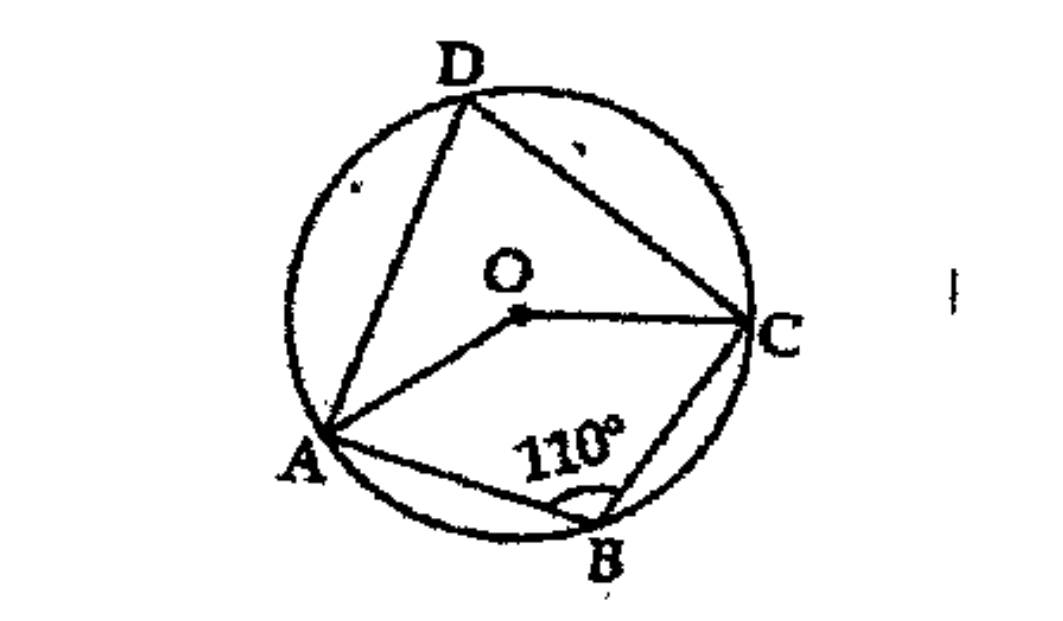 .
.
View SolutionIn the figure, O is the centre of the circle and A,B,C,D are points on it. If `angleB=110^o`, then What is the measure of `angleAOC`?
 .
.
View SolutionThe second term of an arithmetic sequence is 8 and the common difference is 3.
Write the sequence?
View SolutionThe second term of an arithmetic sequence is 8 and the common difference is 3.
What is the `12^(th)` term of the sequence?
View SolutionWrite the coordinates of the point which divides the line joining `A(2,5)` and `B(7,10)` in the ratio `3:2`
View SolutionIf `P(x)=2x^2-3x+1`,then What number is `P(1)`?
View SolutionIf `P(x)=2x^2-3x+1`,then Write a first degree polynomial which is a factor of `P(x)`.
View SolutionThe `5^(th)` term of an arithmetic sequence is 38 and `8^(th)` term is 62.
What is the common difference in the sequence?
View SolutionThe `5^(th)` term of an arithmetic sequence is 38 and `8^(th)` term is 62.
Will the difference between any two terms of this sequence be 100? Why?
View SolutionThe length of base edge of a square pyramid is 12 centimetres and slant height is 10 centimetres.
What is the height of the pyramid?
View SolutionThe length of base edge of a square pyramid is 12 centimetres and slant height is 10 centimetres.Calculate the volume of the pyramid?
View SolutionDraw a circle of radius 3 centimetres. mark a point P at a distance 7.5 centimetres away from the circle. Draw tangents from P to the circle.
View SolutionIn the figure, OABC is a trapezium. `OC=4sqrt2`, `angleCOA=45^o`. Coordinates of A is (6,0).
What is the perpendicular distance from C to OA?
 .
.
View SolutionThe product of two consecutive multiples of 8 is 768.Write this statement in algebric form.
View SolutionThe product of two consecutive multiples of 8 is 768.What are the numbers?
View SolutionIn the quadrilateral ABCD,AB and CD are parallel. `angleA+angleC=190^o`
If a circle is drawn through A,B and D, where will be the position of C?
(Inside the circle,outside the circle, on the circle)
 .
.
View SolutionIn the quadrilateral ABCD,AB and CD are parallel. `angleA+angleC=190^o`
If `AD=BC`, then prove that a circle an be drawn through the points A,B,C and D.
 .
.
View SolutionIn the triangle ABC,`angleC=65^o` and `AB=9cm`. AD is the diameter of the circle,
What is the measure of `angleADB`?
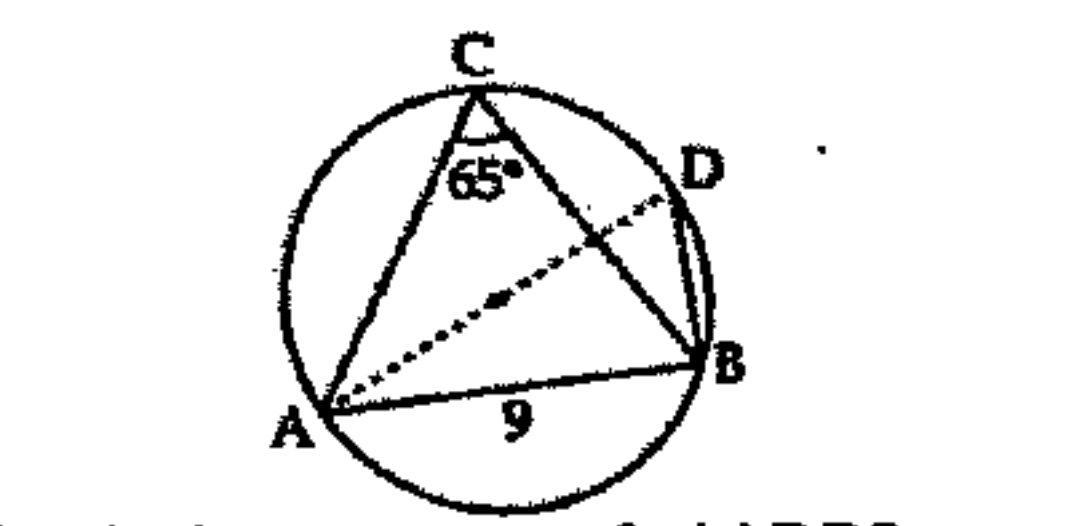 .
.
View SolutionThe base radius of a cone made by rolling up a sector is 3 centimetres. Its slant height is 15 centimetres.What is the radius of the sector used to make the cone?
View SolutionThe base radius of a cone made by rolling up a sector is 3 centimetres. Its slant height is 15 centimetres.What is the central angle of the sector?
View SolutionThe base radius of a cone made by rolling up a sector is 3 centimetres. Its slant height is 15 centimetres.Calculate the area of this sector.
View SolutionThe sum of first n terms of an arithmetic sequence is `n^2+2n` What is the first term?
View SolutionThe sum of first n terms of an arithmetic sequence is `n^2+2n` Find the common difference.
View SolutionThe sum of first n terms of an arithmetic sequence is `n^2+2n` What is the sum of first 20 terms of this sequence?
View SolutionThe sum of first n terms of an arithmetic sequence is `n^2+2n`
Prove that the sum of continuous terms starting from the first of the sequence 3,5,7,..... added to 1 gives a perfect square.
View SolutionIn the triangle, `angleP=45^o`, `angleR=5sqrt2` centimetres.
What is the perpendicular distance from the vertex R to PQ?
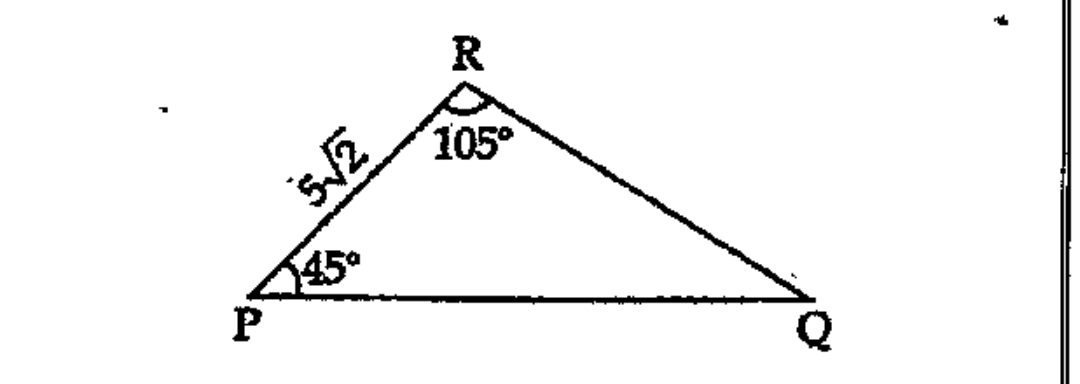 .
.
View SolutionIn the triangle, `angleP=45^o`, `angleR=5sqrt2` centimetres.
What is the length of PQ?
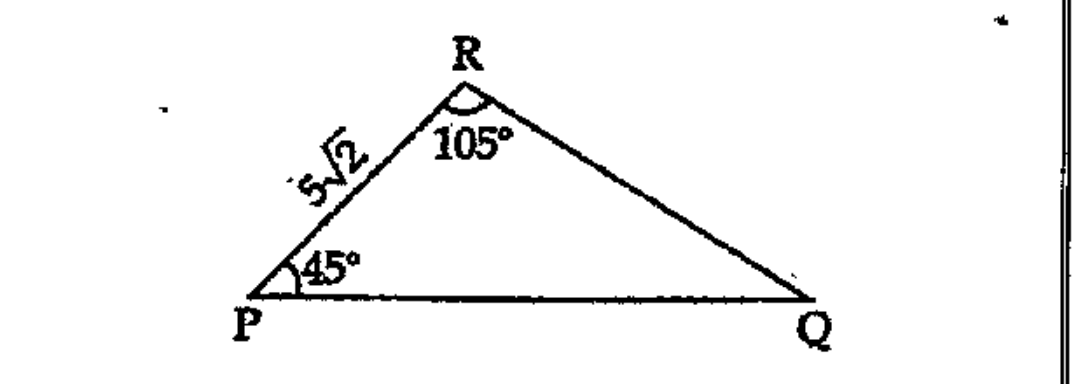 .
.
View SolutionIn the triangle, `angleP=45^o`, `angleR=5sqrt2` centimetres.
If the ratio of angles of a triangle is `2:3:7`, write the ratio of its sides.
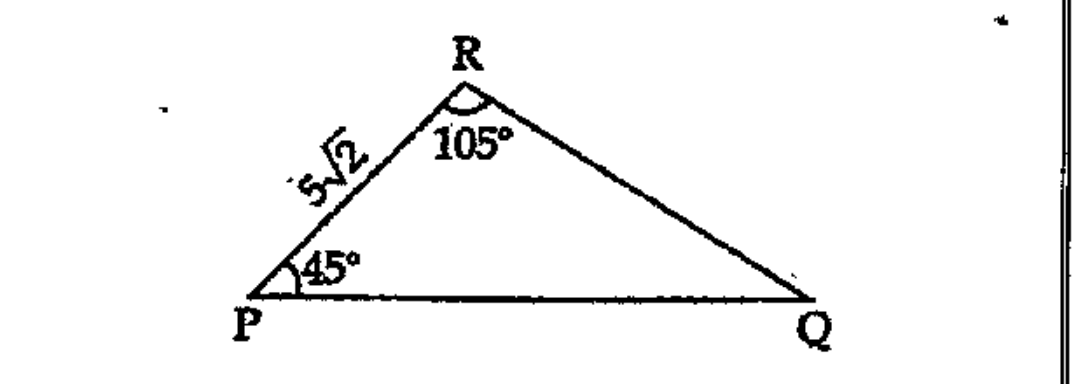 .
.
View SolutionThe length of a rod is 56 centimetres. It is bent into a rectangle.What is the sum of length and breadth of the rectangle?
View SolutionThe length of a rod is 56 centimetres. It is bent into a reactangle.
If the length of the diagonal of this rectangle is 20 centimetres then find the length and breadth of the reactangle?
View SolutionIn the figure, S,R are the centres of the circles and PA,PB are common tangents. `angleAPR=30^o`. Radius of small circle is 3 centimetres.
What is the length of PS?
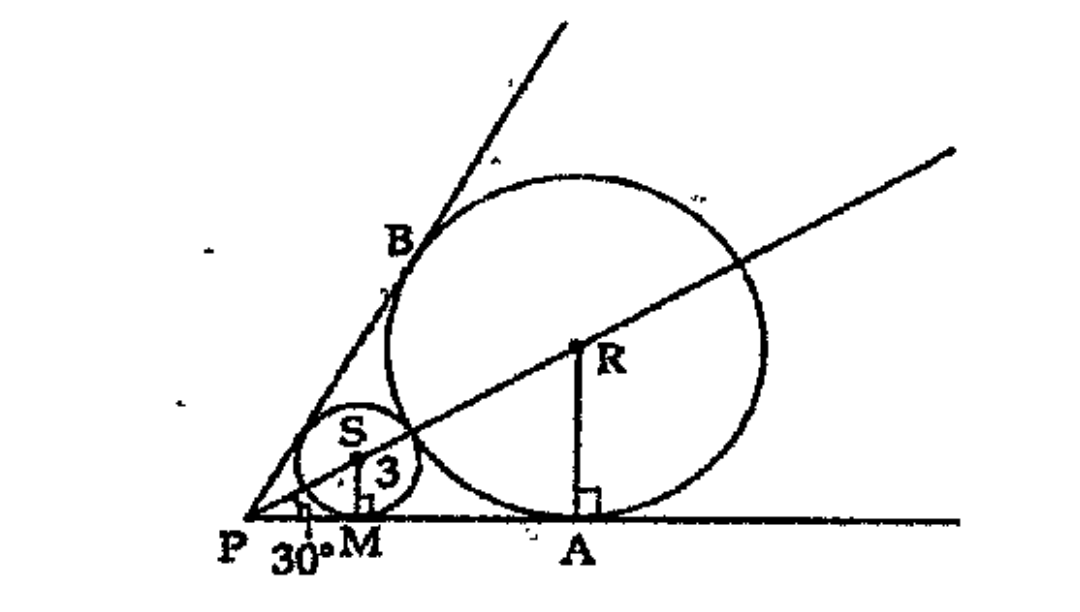 .
.
View SolutionIn the figure, S,R are the centres of the circles and PA,PB are common tangents. `angleAPR=30^o`. Radius of small circle is 3 centimetres.
If the radius of large circle is taken as r, what is the length of PR?
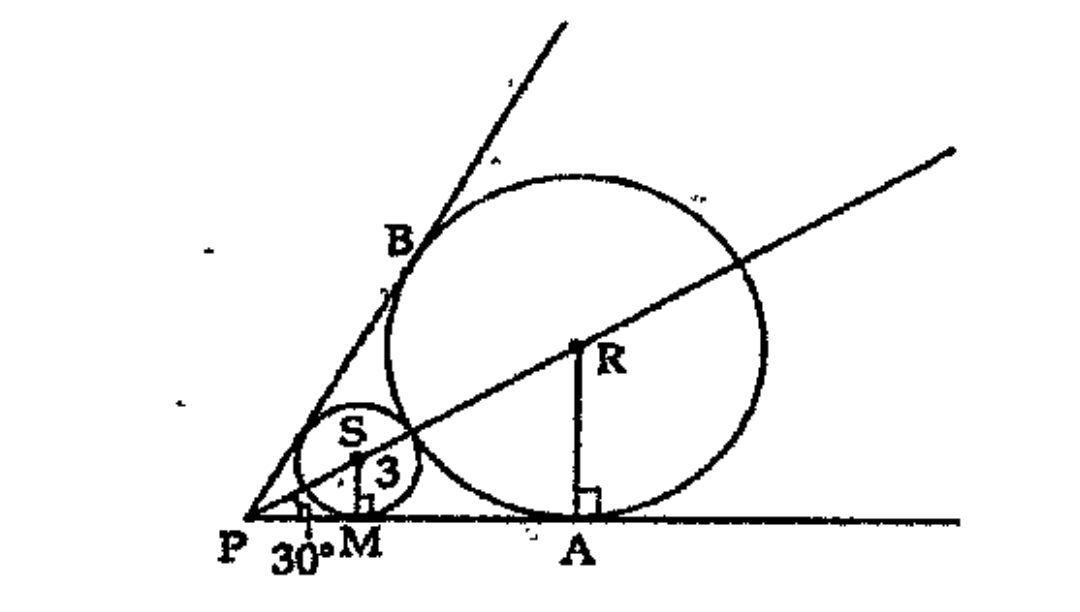 .
.
View SolutionIn the figure, S,R are the centres of the circles and PA,PB are common tangents. `angleAPR=30^o`. Radius of small circle is 3 centimetres.
Calculate the radius of large circle.
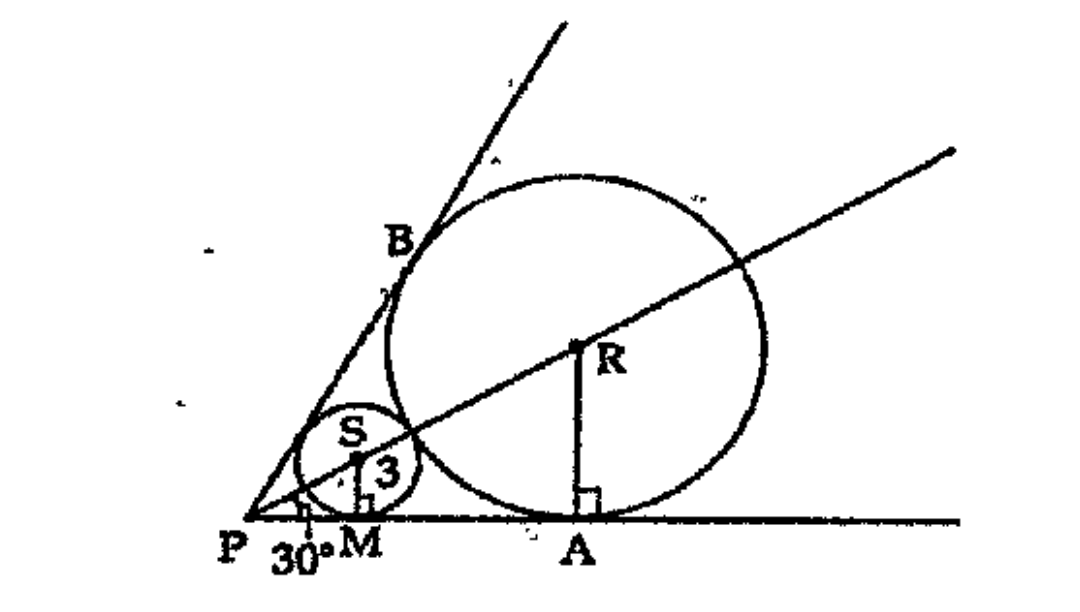 .
.
View SolutionA box contains 6 red beads and 5 white beads. Another box contains 8 red beads and 4 white beads. If one bead is taken from each box, then:
What is the number of possible pairs?
View SolutionA box contains 6 red beads and 5 white beads. Another box contains 8 red beads and 4 white beads. If one bead is taken from each box, then: What is the probability of both beads being red?
View SolutionA box contains 6 red beads and 5 white beads. Another box contains 8 red beads and 4 white beads. If one bead is taken from each box, then:What is the probability that both beads are white?
View SolutionA box contains 6 red beads and 5 white beads. Another box contains 8 red beads and 4 white beads. If one bead is taken from each box, then: What is the probability of getting at least one red bead?
View SolutionIn the figure, coordinates of two vertices of a rhombus are `A(-1,2)` and `C(7,2)`.Write the coordinates of midpoint of the diagonal AC.
 .
.
View SolutionIn the figure, coordinates of two vertices of a rhombus are `A(-1,2)` and `C(7,2)`.If the length of the diagonal BD is 6, write the coordinates of other two vertices.
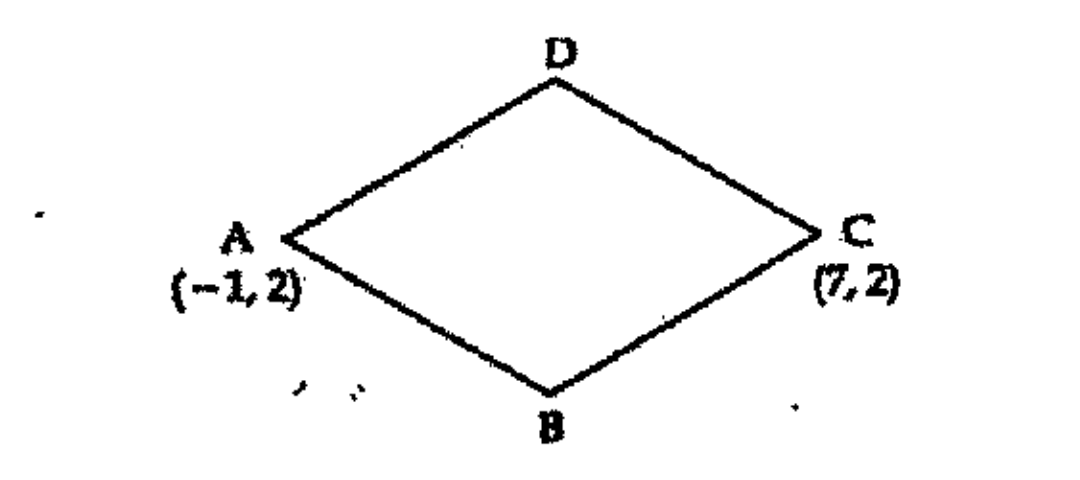 .
.
View SolutionIn the figure, coordinates of two vertices of a rhombus are `A(-1,2)` and `C(7,2)`. Calculate the length of one side of the rhombus.
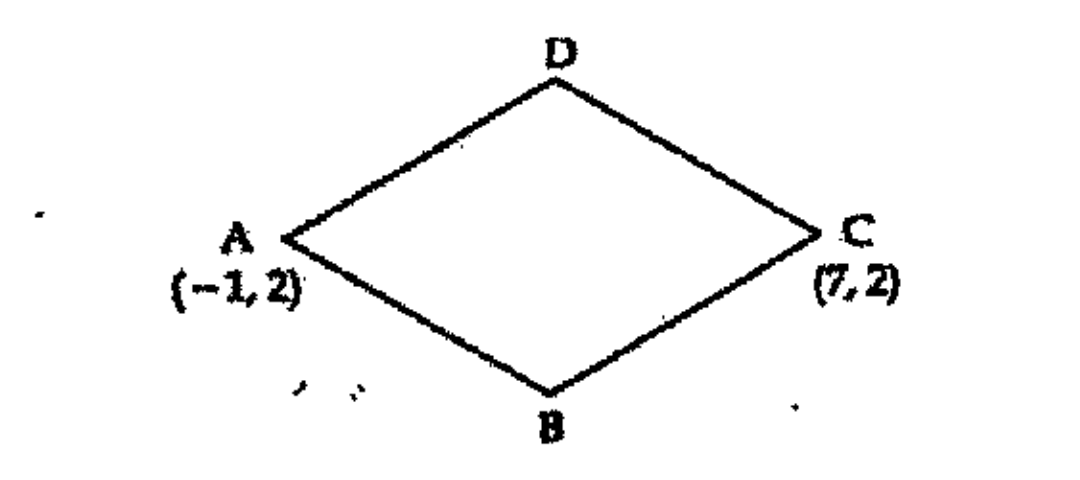 .
.
View SolutionIf `P(x)=3x^2-5x+7`,then What number is P(2)?
View SolutionIf `P(x)=3x^2-5x+7`,then Write the polynomial got by subtracting `P(2)` from `P(x)`.
View SolutionIf `P(x)=3x^2-5x+7`,then Write `P(x)-P(2)` as the product of two first degree polynomials
View SolutionIn the figure, O is the origin and A(8,0), B(0,6) are two points.Write the coordinates of the centre of the circle with AB as diameter.
 .
.
View SolutionIn the figure, O is the origin and A(8,0), B(0,6) are two points.Write the equation of the circle with AB as diameter.
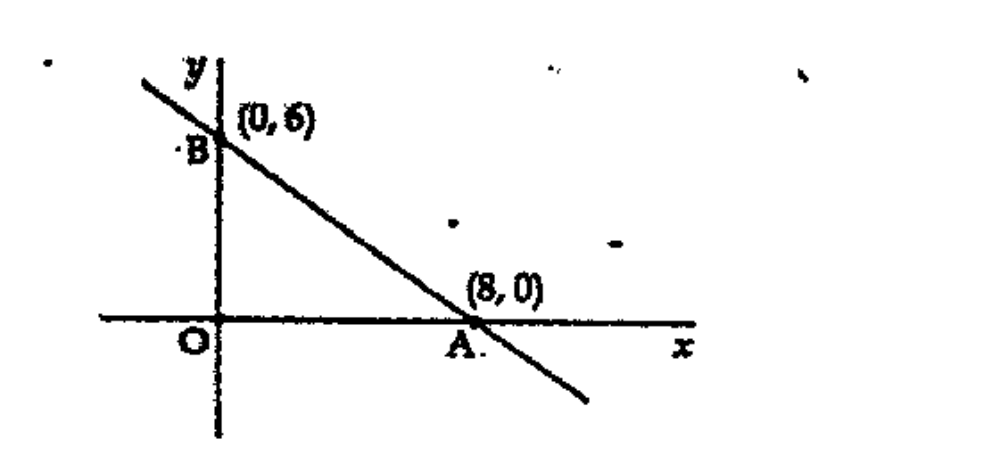 .
.
View SolutionDraw a triangle with radius of incircle 3 centimetres and two of its angles `50^o` and `70^o`.
View SolutionIn the figure, the radius of the semicircle with centre O is 5 centimetres. `PB=2` centimetres.
What is the length of PA?
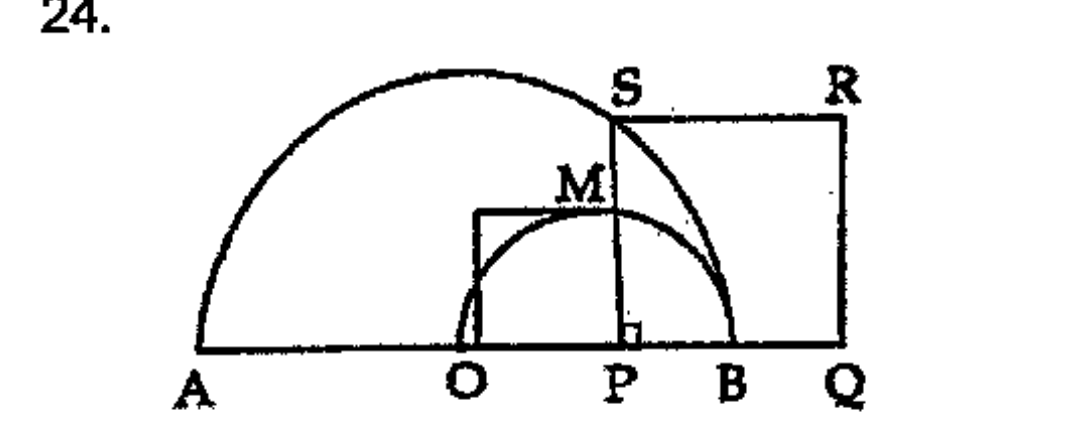 .
.
View SolutionIn the figure, the radius of the semicircle with centre O is 5 centimetres. `PB=2` centimetres.
What is the area of square PQRS?
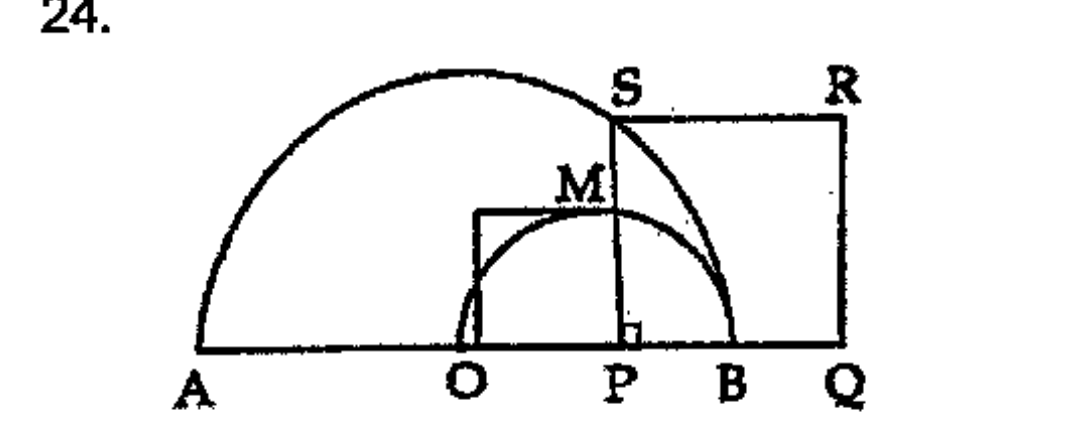 .
.
View SolutionIn the figure, the radius of the semicircle with centre O is 5 centimetres. `PB=2` centimetres.
Calculate the area of the square with PM as one side.
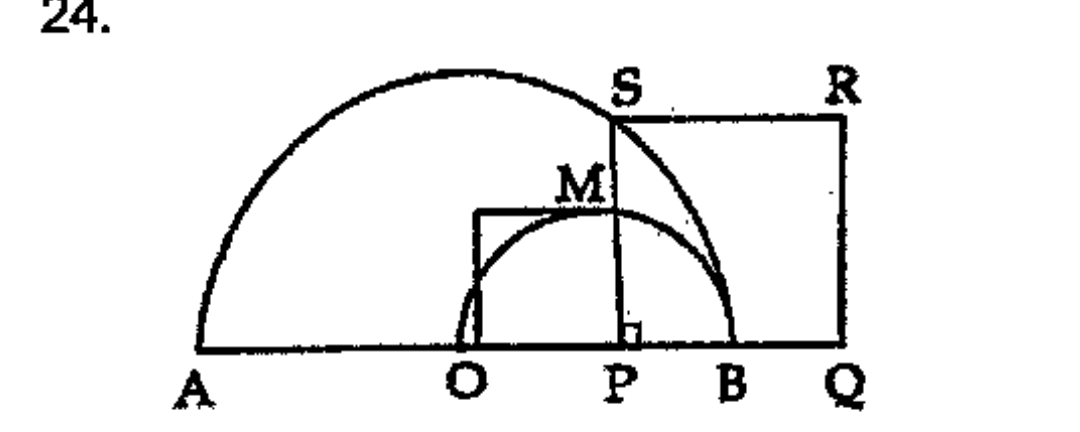 .
.
View SolutionIn the figure, the radius of the semicircle with centre O is 5 centimetres. `PB=2` centimetres.
Write the ratio of areas of these two squares.
 .
.
View SolutionA man, standing at the foot of a tower, sees the top of a building 20 metres away at an elevation of `60^o`. Climbing to the top of the tower, he sees it at an elevation of `45^o`.Draw a rough figure based on the above facts.
View SolutionA man, standing at the foot of a tower, sees the top of a building 20 metres away at an elevation of `60^o`. Climbing to the top of the tower, he sees it at an elevation of `45^o`.What is the height of the building?
View SolutionA man, standing at the foot of a tower, sees the top of a building 20 metres away at an elevation of `60^o`. Climbing to the top of the tower, he sees it at an elevation of `45^o`.Calculate the height of the tower. (Take `sqrt3=1.73`)
View SolutionThe following table shows the details of daily wages of 45 workers in a factory.
Calculate the median daily wage.
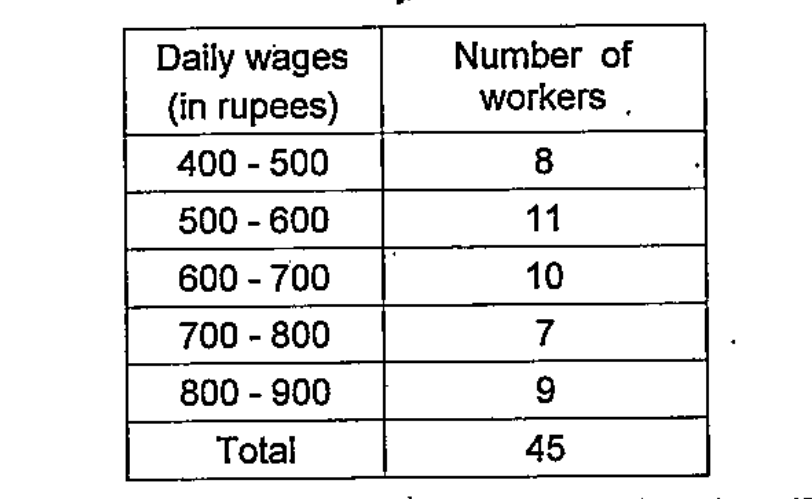 .
.
View SolutionThe sum of the first and `21^(th)` terms of an arithmetic sequence is 140.What is the `11^(th)` term?
View SolutionThe sum of the `first` and `21^(th)` terms of an arithmetic sequence is `140`.Write the sequence, If the first term is 10.
View SolutionThe sum of the first and `21^(th)` terms of an arithmetic sequence is 140.Calculate the sum of first 11 terms of this sequence,if the first term is 10.
View SolutionFind the sum of first 11 terms of the sequence 20,25,30.......
View SolutionWhat is the radius of the largest sphere that can be carved from a cube of edge 12 centimetres?
View SolutionWhat is the volume of the cone of maximum size that can be carved from a cube of edge 12 centimetres?
View SolutionWe know that sequence got by starting with any number and adding a fixed number repeatedly is called an arithmetic sequence.Example: 1,3,5,7,........ Like this we can form sequences by starting with any number and multiplying by a fixed non-zero number repeatedly. For example 1,2,4,8.......... In this sequence, one number multiplied by 2 gives the next number. Such sequences are called geometric sequences. The common number used for repeated multiplication is called common ratio.
What is the `5^(th)` term of the geometric sequence 1,2,4,8,........?
View SolutionWe know that sequence got by starting with any number and adding a fixed number repeatedly is called an arithmetic sequence.Example: 1,3,5,7,........ Like this we can form sequences by starting with any number and multiplying by a fixed non-zero number repeatedly. For example 1,2,4,8.......... In this sequence, one number multiplied by 2 gives the next number. Such sequences are called geometric sequences. The common number used for repeated multiplication is called common ratio.
Write the geometric sequence with first term 2 and common ratio 3.
View SolutionWe know that sequence got by starting with any number and adding a fixed number repeatedly is called an arithmetic sequence.Example: 1,3,5,7,........ Like this we can form sequences by starting with any number and multiplying by a fixed non-zero number repeatedly. For example 1,2,4,8.......... In this sequence, one number multiplied by 2 gives the next number. Such sequences are called geometric sequences. The common number used for repeated multiplication is called common ratio.
What is the common ratio of the geometric sequence 3,12,48,.....?
View SolutionWhat is the slope of the line joining the points (2,7) and (6,4)?
View SolutionWhat is the slope of the line joining the points (2,7) and (6,4)?Write the equation of the line?
View Solution
EXAMPLE questions and complete solutions for chapter MODEL PAPER 20 of MAXIMUM PUBLICATION of Class 10